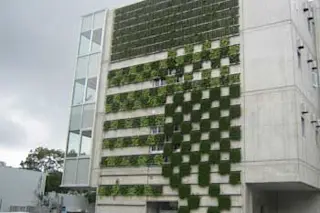Want to cool a building? Steal a trick from the forest canopy and use leaves for shade, as Osaka University did with its Frontier Research Center (pictured above). Builders, architects, and designers seeking better ways to go green are increasingly turning to nature—the original green—for solutions that have proven track records in the real world.
Engineering inspired by nature can be “functionally indistinguishable from the elegant designs we see in the natural world,” says Janine Benyus, a leading proponent of nature-based design and founder of the Biomimicry Institute. Benyus says the strategy has already yielded a wide range of new products that may replicate nature’s successes: ceramics with the strength and toughness of abalone shells, self-assembling computer chips that form by processes similar to the way that tooth enamel grows, adhesives that mimic the glue that mussels use to anchor themselves in place, and self-cleaning plastics based on the structure ...















